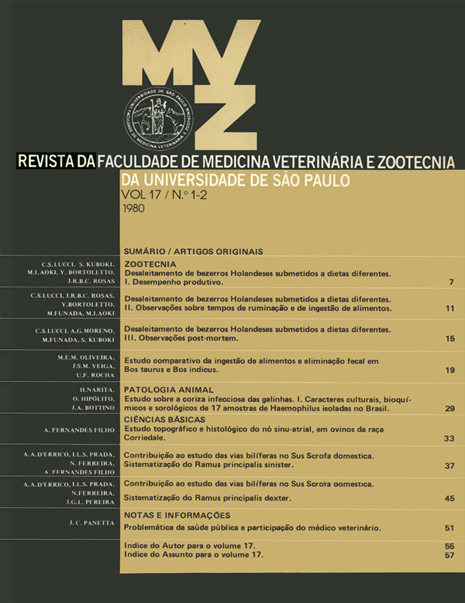Studies on infectious coryza of chickens. I. Cultural biochemical and serological characteristics of 17 strains of Haemophilus isolated in Brazil
DOI:
https://doi.org/10.11606/issn.2318-3659.v17i1/2p29-31Keywords:
Infectious coryza (chickens), Haemophilus gallinarum, Haemophilus paragallinarumAbstract
Seventeen strains of organisms of the genus Haemophilus were isolated from the infra-orbital sinuses of chickens with clinical symptoms of infectious coryza. The isolates grew well in the Agar-20 medium and in the CMI—20 liquid medium supplemented with 5 per cent chicken serum and 2 per cent yeast extract. These organisms required factor V but not factor X for growth in Agar-20 medium. No growth was obtained in serial passages in Agar-20 medium in aerobic conditions. Staphylococcus aureus was used as feeding culture for isolation purposes. All strains were catalase and indol negative. None produced indol, H2S and gas or liquefied gelatin. All reduced nitrates to nitrites and were Gram negative, immotile and presented bipolarity. All fermented glucose, mannose, fructose, saccharose and dextrin but not arabinose, rhamnose, galactose, lactose, trehalose, raffinose, inulin, adonitol, dulcitol, inositol and salicin. A few fermented xylose, maltose, mannitol and sorbitol. Nine strains were studied serologically and divided into two groups. All strains of one serological group fermented xylose while none of the other group did it. Sinse all strains studied did not require factor X but only factor V they should be classified as Haemophilus paragallinarum, BIBERSTEIN e WHITE, 1969.


